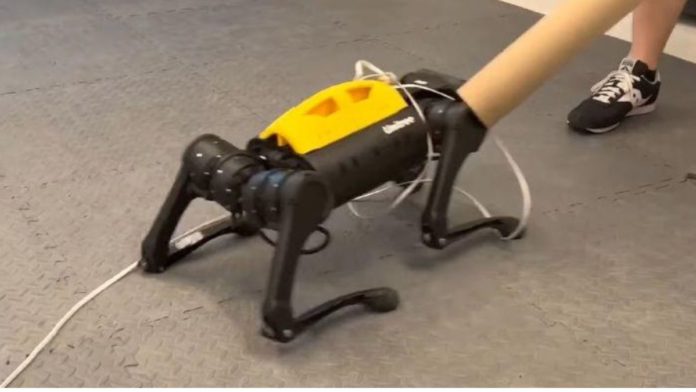A robotic dog at the University of California (UCLA), Berkeley, is surprisingly a quick learner with an AI brain as it taught itself to walk in just an hour. The robotic dog is super intelligent compared to many other robots as it utilizes artificial intelligence to teach itself.
It begins on its back, waves its legs, and learns to flip over itself, stand up, and walk again. It takes as little as 10 minutes to learn new tricks like withstanding and recovering a roll of cardboard pushed by its handlers.
It is not the first time a robot to utilize artificial intelligence for walking but what makes this robot different from others is that it does not train by trial and error over iterations and simulations. As it is being called, the Berkeley bot learned in the real world by itself.
Read More: Meta’s AI chatbot, BlenderBot 3, already making comments, starting with the CEO, Mark Zuckerberg
Here is a video of how the dog learns and functions.
Researchers believe that transferring algorithms trained in simulation to real-world scenarios is challenging. The little differences and details between simulations and the natural world can confuse robots. Times have changed, and technology has advanced with algorithms like Dactyl, trained in a simulation powered by 6,144 CPUs and V100 GPUs.
Even after the advancements, the problem more or less remains. The Berkeley team decided to solve it with an algorithm called Dreamer. Dreamer can forecast the likelihood that future action will succeed in its objective by constructing a “world model.” Its projections get more precise with practice.
In other words, a world model can reduce the time it takes to train to the equivalent of a few harrowing hours in the actual world.


